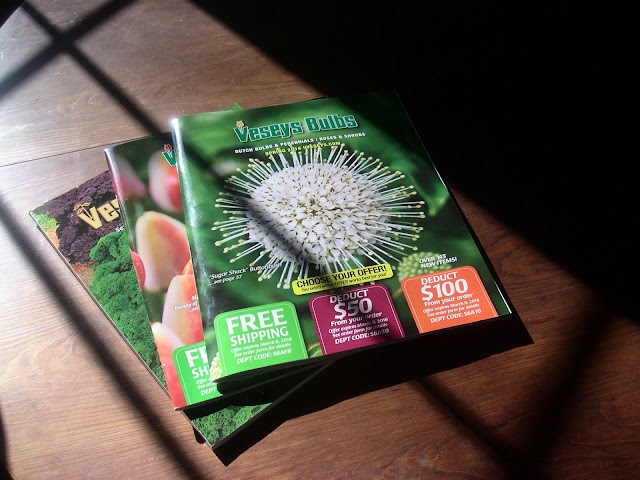It's been a while since I posted anything on the sauerkraut I started over two weeks ago, but to tell the truth, there hasn't been much to post about. I have been checking it every few days and it is starting to develop a nice tang, however it still tastes very much like salty cabbage.
While reading up on the vagaries of making sauerkraut (not many, I've got to admit -- it's ridiculously simple!), I came across some rather elegant ways of protecting the fermentation environment, in particular some glass fermentation weights made specifically to fit in a wide mouth Mason jar and a jar lid fitted with a fermentation air lock that, again, was purpose-made for fermenting in a wide mouth Mason Jar.
I was thrilled to find some
Pickle Pebbles glass fermentation weights available here in Canada from
The Cannery, in Calgary Alberta. I ordered them and they arrived safely and very well packed within 6 days.
Being a home winemaker from way back, I have many extra fermentation locks and the thought occurred to me that I could make my own fermentation lids using the plastic storage lids that Bernardin sells to fit their jars. So, a hack was born!
I decided to make four fermentation lids: two to use on the jars of sauerkraut and two extras. Plus, I had four Pickle Pebbles. First, I collected my materials and tools: plastic storage lids to fit wide-mouth Mason jars, four fermentation locks, four 5/8" rubber wire grommets and a variable-speed drill with a 1/2" bit and a 1/8" bit.
Turning a lid upside down on a block of wood to protect the top of my workbench, I use the smaller bit to drill a pilot hole in the center of the lid. Turning the lid upside down prevents the lid from cracking.
Next, I enlarge the hole by drilling with the 1/2" bit.
The hole isn't perfectly centered, but that's okay. It won't affect the operation of the air lock. Brush away the shards of plastic produced by the drill.
The rubber wire grommets have a groove running around their outside perimeter. Take one and slide it sideways into the hole so that the edge of the hole fits into the groove. Work your fingers around the grommet until it is fully inserted and seated in the hole.
Take a fermentation lock and gently insert it into the hole, carefully twisting it if necessary so that about a 1/2" of the stem is visible on the underside.
And there we have it!
Back in the kitchen, I have replaced the jar weights with my new glass weights and fermentation lids. The jar weights work just fine and there's absolutely nothing wrong them (plus, they're free!), but being the gadget freak that I am, I just couldn't help but try out these fermentation weights and lids.
And while we're on the topic of refined fermenting, (this is SUCH a bad segue, I know -- please forgive me!), I've made it through nearly a week of the GAPS Intro diet. I'm really pleased with the near-constant, gradual weight loss, but apart from that, I really don't feel that much different. The brain fog is still here as are my skin problems, although I can't decide whether or not the lichen planus is actually starting to heal or not. It's definitely nowhere near as itchy as it was, so that's a real bonus!
Maybe I'm expecting too much too soon, but I was thinking I would somehow be feeling "lighter" and "clearer" by now (not sure how better to describe it). The books state that the healing begins immediately and you will go through a period of discomfort first as your body eliminates all the built-up toxins. Apart from a bit of bloating and a couple of headaches, I can't say I've really had any discomfort, so maybe it's like my sauerkraut and it just needs more time.
We'll see. I have to admit that although the soups are quite tasty, and it was easier than I thought to start having soup for breakfast, I am getting tired of them morning, noon and night, so I am beginning to think about moving to Stage 2 soon, where I will be able to have egg yolks (no whites just yet) added to my soups as well as fresh herbs and more dairy. Also, stews and casseroles made with boiled meat and vegetables! Whoo-hoo!
Onwards!


















































